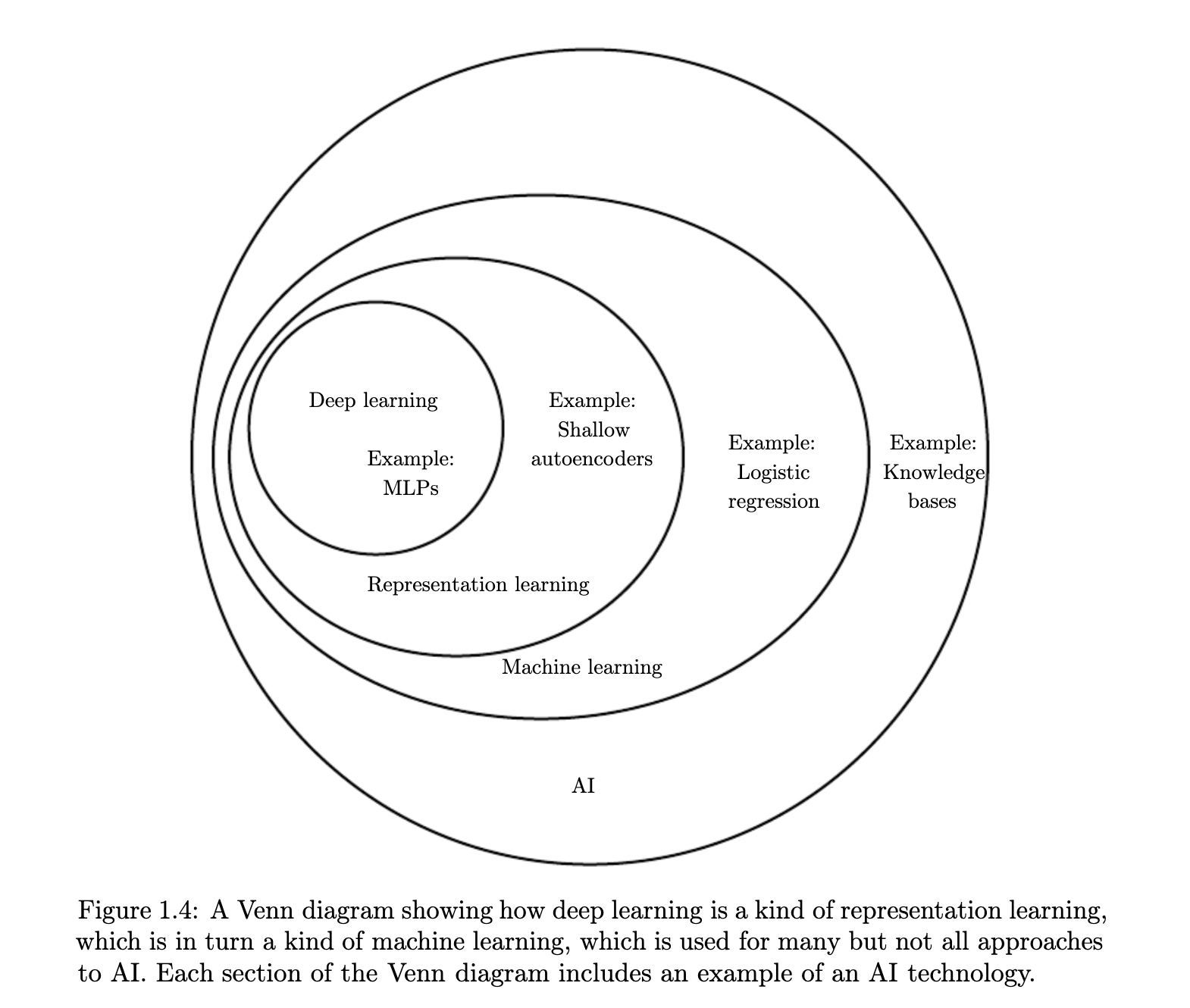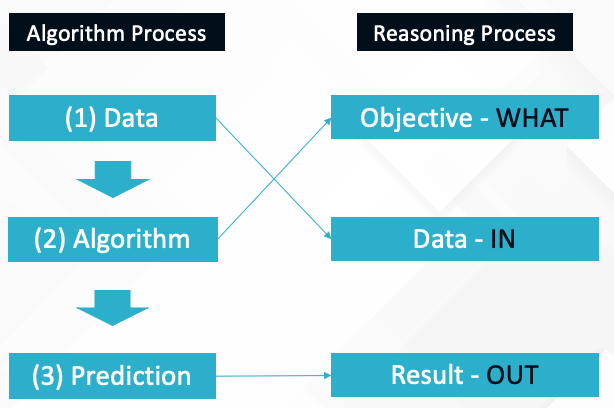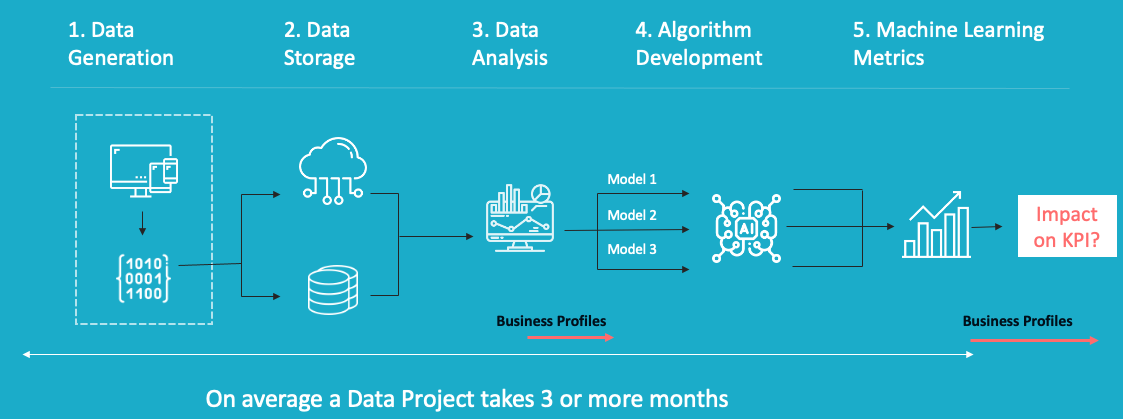Fundamentals of Machine Learning [ENG]
This year I debuted as a teacher in the Data Science & Big Data Analytics - MDS+ at The Valley Business School. A master’s degree that aims to teach practical Data Capabilities and Strategy, for today’s data practitioners.
The objective of the session (Fundamentals of Machine Learning) is for the students to understand how a Machine Learning algorithm works and how to approximate a real problem from their company. In addition, context will be given on the subject and the process that data modeling follows.If I have to summary the class in four things, they are:
1. Machine Learning definition and context
Machine Learning, is a branch of artificial intelligence where algorithms acquire their own knowledge through examples. To contextualize the concepts, Artificial Intelligence, Machine Learning and Deep Learning, let’s look at the following image:

Source: Chapter 1: Introduction - Deep Learning Book
- Artificial intelligence: it is the base of knowledge, it can be coded inference rules
- Machine Learning: it is when the algorithms acquire knowledge through the examples without intervention in their learning
- Deep Learning: when these algorithms learn to represent very complex concepts by representing them in a simple way. Used on images and text
2. Why now?
During different moments of the late twentieth century, a lot was said about artificial intelligence and the different applications it would have. Why has the expansion been in the last 10 years?
- Context
- Data: digitization of the Company and lowering the price of disk storage
- Computation capabilities: computing capabilities have been doubling every 2 years, the well-known Moore’s Law
- Algorithms: current algorithms are outperforming people in solving specific tasks and are developed in open source
- Data, it is the material on which we will build, there are two types:
- Structured, follows a table structure
- Unstructured, does not follow a table structure. Ex: text, image, audio
-
Algorithm, it is the mathematical function that links the input data and an action
-
We are in the Narrow Artificial Intelligence context, where artificial intelligence algorithms today are for one specific task
- What do they do? It is the general objective by which our mathematical model learns
- Supervised, he performs a task that he knows the result of it and can evaluate when he is doing it right or wrong. Ex: predict total sales for next month
- Unsupervised, perform a task that we do not know exactly the result of this Ex: analyze the type of clients that my company has
- Reinforcement learning, you learn while doing the task Ex: the classic example is an agent (Super Mario) who plays a video game
- How do they do that? This is how a mathematical relationship is established between the input variables X and the prediction Y. This relationship can be done in different ways, where we highlight: Linear / Nonlinear / Tree

Source: self made. Example of different ways of learning. The goal is to separate the red and blue dots. The red line is the way the algorithm learns to separate.- Objective function, it is the function that tells us objectively how our algorithm is learning. What he wants to do is that our predictions Y ̌, are as close as possible to the real value Y. So that before a new observation the value is predicted well.
-
- Prediction: Resulting Action

3. Data pipeline
-
Research Question, the single, clear and concise question that we want to solve with our algorithm.
-
Data Validation + Cleaning, validation and cleaning of the data. One of the most time consuming parts of the data scientist. We must remember that we never assume that the data is correct
-
Exploratory Data Analysis, understand and graph our data set. This part is crucial to validate the data and begin to extract insights from it.
-
Modeling, the most concrete part of machine learning where our algorithm learns the underlying relationship between the input variables
-
Performance, evaluation of how the predictions of my mathematical model are impacting the business reality

4. Algorithm pipeline
When we say that we train an algorithm, it means that we have an objective way of measuring its learning: the objective function / loss function. This function, as we have commented previously, evaluates that our predictions Y^, are as close as possible to the real value Y.
- Input data / Dimension
- The typology of the input data can be of a different nature. That is why we will need to modify some variables numerically so that our algorithm establishes relationships between them. Variables such as categorical, dates, or text fields.
-
Ways of learning, this point already discussed in the syllabus, is the way in which the relationship of my input data X and my variable to predict Y is established.
- How to train - Train / Test / Validation
- The way we distribute our initial data in order to ensure that the training of our algorithm is well done and is generalizable.
- Train / Test / Validation.
- Train: set of data on which we fit the model
- Validation: data set used to provide an unbiased sample of how the model has been fitted
- Test: final set for which the model has not seen the data. The metric on this set will tell us which model works best

- Cross validation: separation of the dataset into different data sets to validate on
- Evaluation metric
- It is the business metric on which we will evaluate the performance of our algorithm. We have to evaluate prediction failures in a product recommendation algorithm in an eCommerce differently than in the medical sector.
- Tools, Open Source paradigm
- Programming languages, is the tool that makes the code we develop operational. In the environment of data science we will talk about two main languages, Python and R
- Libraries are code packages which have been developed for specific functions. In this context, when the code is open, we will talk about Open Source
- Most used libraries:
- Numpy, algebra and calculus library
- Pandas, library to manipulate data in DataFrame format
- Seaborn, graphic library
- Sickit-learn, library with implemented machine learning algorithms
- Actions for the algorithm to learn better
- Feature Engineering: creation of new variables over the existing ones in our dataset:
- Clever Data: add different sources that allow us to add information and improve the predictions of our model
- Interpretability vs Predictability, a dichotomy that we find in Machine Learning models. Those models that make better predictions tend to be more complex, being more complex they are less interpretable
Teaching in COVID-19 times 😷
Go back to: 📝 Blog